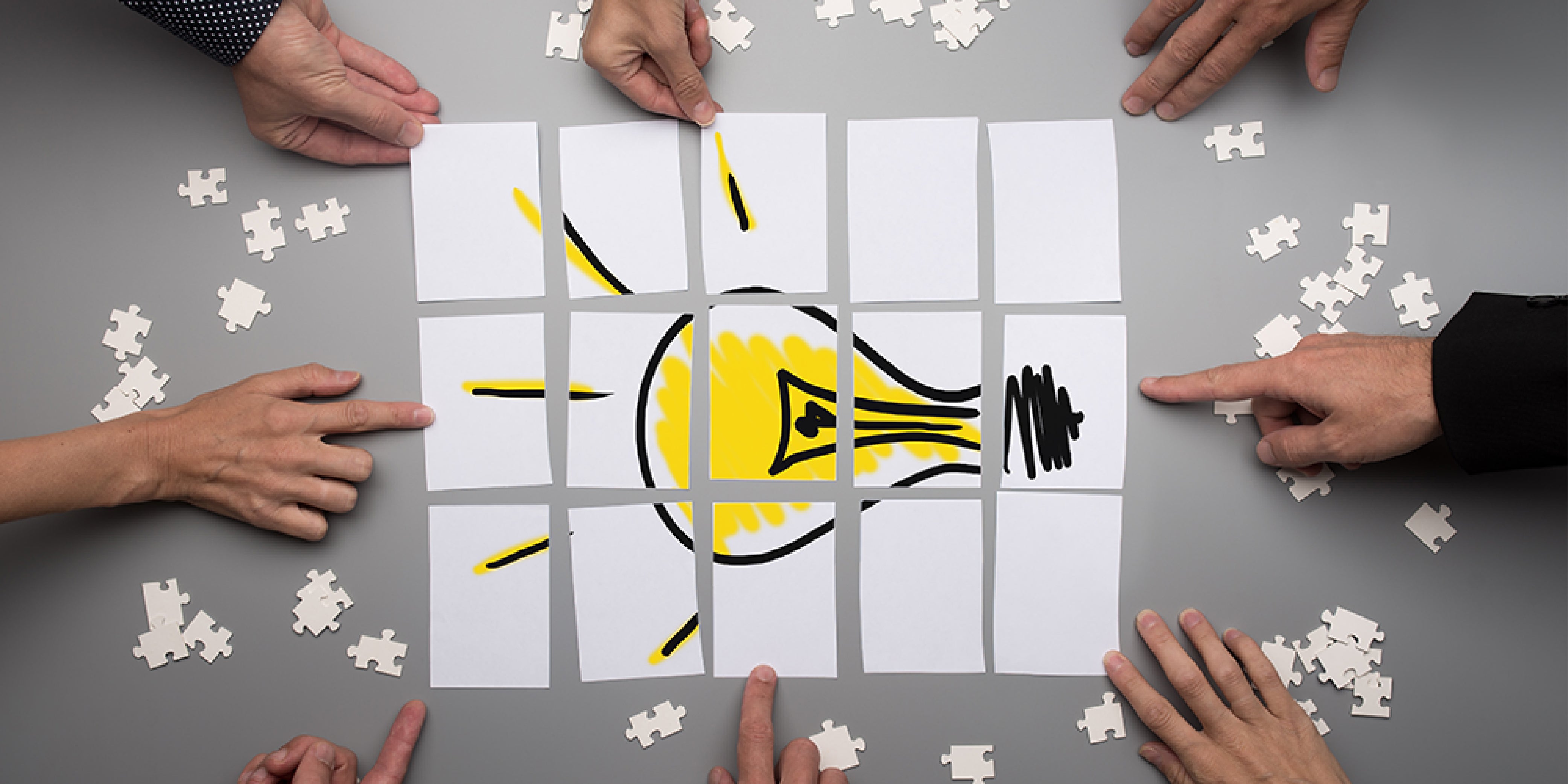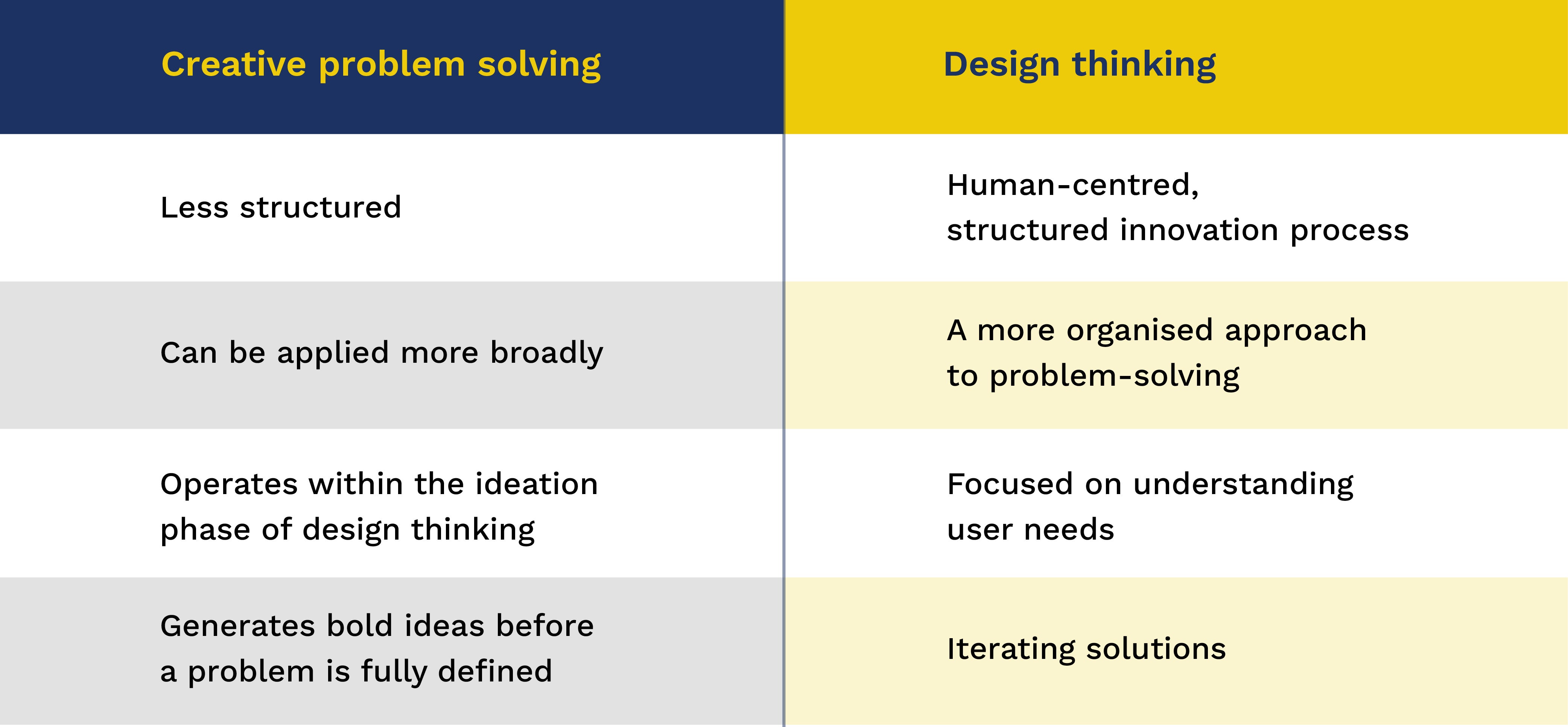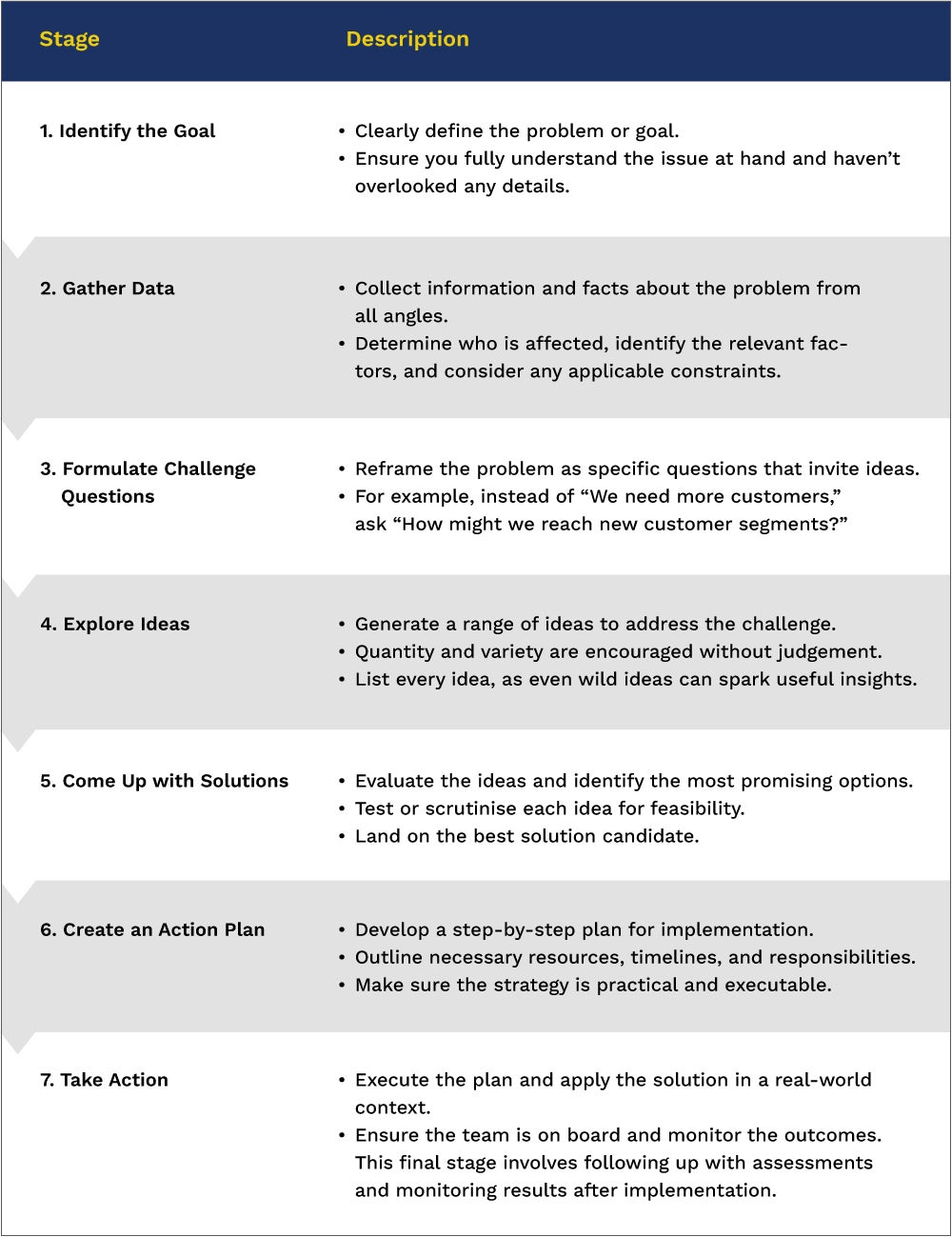What Is Creative Problem Solving & Why It Matters

In a fast-paced workplace, facing a challenging project that resists traditional solutions can feel overwhelming, like trying to complete a puzzle without all the pieces. During these uncertain times, when it seems you've reached an impasse, creative problem solving (CPS) can be transformative, enabling you to confront challenges with renewed assurance.
A prime example is the renowned Apollo 13 mission, where NASA's inventive problem-solving saved the lives of 3 astronauts stranded in space. Amid catastrophic failure, the team worked together to create a makeshift carbon dioxide scrubber from limited resources, showcasing the power of creative problem solving under pressure.
Creative problem solving is more than just a buzzword. It’s the engine behind innovation and a cornerstone of career success in the modern workplace. By learning to define problems clearly, think laterally to generate ideas, and apply structured decision-making strategies to implement solutions, you can equip yourself to handle whatever challenges that come your way.

What is Creative Problem Solving?
Creative problem solving is a method for resolving challenges in an imaginative, innovative, and unconventional way. Unlike routine problem-solving that follows a linear approach, CPS encourages solution generation through idea development and experimentation. It’s a method that combines analytical reasoning with creativity to generate numerous possibilities and then refine them into practical solutions. Key principles of CPS include:
Balancing Divergent and Convergent Thinking
Effective CPS skilfully navigates between two distinct modes of thought. Divergent thinking is the expansive phase, focused on generating a multitude of diverse ideas without initial judgement. Convergent thinking, conversely, is the focused phase, involving the analysis, evaluation, and refinement of those ideas to pinpoint the most viable and impactful out-of-the-box solutions. The power of CPS lies in its capacity to harness both these processes.
Reframing Problems as Questions
A subtle yet profound shift occurs when problems are reframed as open-ended questions (e.g., "How might we...?"). This technique transforms perceived obstacles into invitations for exploration and idea development, fostering a proactive, solution-oriented mindset rather than a reactive, problem-focused one.
Deferring Judgement of Ideas
During the crucial idea development phase, it is important to suspend criticism and evaluation. Immediate judgement, whether positive or negative, can stifle the free flow of thought and discourage the sharing of unconventional ideas. Yet, it is often from these nascent, unpolished concepts that true innovation arises. This principle is a foundational element for creating an environment of psychological safety. When individuals feel secure sharing ideas without fear of immediate dismissal, they are more likely to engage in innovative thinking, leading to a richer pool of potential solutions for overcoming challenges.
Focusing on "Yes, And" Instead of "No, But"
The language used during creative sessions significantly impacts outcomes. Employing additive phrases like "Yes, and..." builds upon existing ideas, fostering a constructive and encouraging atmosphere. Conversely, phrases like "No, but..." can shut down creative avenues and discourage participation. A positive linguistic approach is vital for nurturing collaborative teamwork and maximising collective creativity.
Creative Problem Solving vs. Design Thinking
While Creative Problem Solving and Design Thinking share a common goal - to uncover innovative solutions - they approach the task from different angles. You might think these two methodologies are quite similar, but they each bring a unique set of tools and perspectives to the table.

The 7 Stages of the Creative Problem Solving Process
While creativity can sometimes seem abstract, effective creative problem solving often relies on a structured process. This process can be divided into 7 steps that help guide individuals and teams through a logical progression from problem identification to solution implementation. By systematically moving through these stages, individuals and teams can arrive at creative, well-vetted solutions for complex issues.

Benefits of Creative Problem Solving
Given the high demand for creative thinking and problem-solving skills in the modern workplace, investing in creative problem solving can have a transformative impact on a professional's career and personal growth. These benefits include:
- Enhanced Critical Thinking and Analytical Reasoning: The processes inherent in CPS, such as problem analysis, information evaluation, and pattern identification, naturally hone an individual's critical thinking skills and capacity for analytical reasoning.
- Improved Decision-Making: CPS encourages exploring multiple perspectives and rigorously evaluating options. This leads to more robust, well-informed, and effective decision-making strategies.
- Increased Confidence: Successfully tackling challenges through the application of creative solutions builds self-efficacy, fosters a growth mindset, and enhances overall professional confidence.
- Leadership Potential: Individuals who demonstrate the ability to creatively navigate ambiguity, solve complex problems, and guide teams towards innovative outcomes are frequently recognised for their leadership potential.
Craft Your Success Through Creative Problem Solving
If you’re eager to enhance your analytical skills and unlock exciting career opportunities, consider exploring Sunway University's Master of Business Analytics. This 100% online programme offers various specialisations, including an elective in Design Thinking and Creative Problem Solving, allowing you to confront even the most complex business challenges directly. Contact our Education Counsellors today for personalised guidance on your enrolment options.





